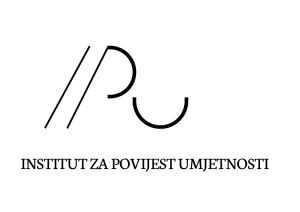Stella Fatović-Ferenčić, Martin Kuhar “Images from our orthopedic hospital”: Photography as a tool of orthopedic strategies in Croatia during the WWI, International Orthopaedics https://doi.org/10.1007/s00264-020-04837-x (published online October 8, 2020, printed version will be released until end of this year) Since it’s down, photography had played an important role in establishing and developing status of the new medical discipline of orthopaedics. This picked particularly during the WWI when many
“Images from our orthopedic hospital”: Photography as a tool of orthopedic strategies in Croatia during the WWI
Watching, Waiting – Extended deadline for submissions
Extended deadline for submissions – Deadline for submissions extended from June 30th to July 20th 2020 Notification of acceptance August 7th 2020 The Institute of Art History – The Cvito Fisković Centre, Split call for papers for an international conference of academics and professionals organized as part of a week of events in scholarship and research DISCOVERING DALMATIA VI, 3 – 5 December 2020. Inspired by the current situation,
Family Photography
Tihana Rubić aims at affirming and (re)evaluating ethnological and cultural anthropological concepts related to family photography. With the specific research perspective of ethnology and cultural anthropology, she will investigate social and symbolic features of analogous family photography from the 1960s and 1980s when the Faculty of Humanities and Social Sciences of the University of Zagreb established the Center for the Preparation of the Ethnological Atlas of Yugoslavia as the
From sketches to photographs – the recording of space
Ana Šverko’s research will focus on the unique characteristics and complementarity of recording space through various media: from drawings to photographs, and through an analysis of photo documentation with the goal of uncovering the lasting, the remembered, and the forgotten in space. The emphasis will be on travel photography and approaches that intentionally exclude certain elements while mapping space through a scene/photograph. This research aims to valorise photography within
A (Self)-Portrait of the Vanishing Memory
The paper by Leonida Kovač considers the interdisciplinary research project of a photographer Silvestar Kolbas entitled Fotokemika. Fotokemika was successful photochemical company established in 1946 in Zagreb as a small laboratory that produced black and white photographic paper, photo chemicals and simple cameras. Since 1949 when the factory in the nearby city of Samobor was opened the firm developed in the successful producer of photographic, cinematographic and x-ray
The album “Memory of Zagreb” by Ivan Standl – The first example of collotype printing in Croatian photography
In an article accepted for publication in the journal Arhivski vjesnik (Bulletin d’archives), Hrvoje Gržina presents the results of the analysis of the album “Memories of Zagreb” by Ivan Standl from the year 1871. This album – apart from its exceptional cultural and historical value for Zagreb and Croatian photography in general – is also important because of the printmaking technique by which the prints included in the album
Women Photographers in Yugoslavia, Pre- and Post-WWII
In the paper accepted to be published in the British journal Photography & Culture, Sandra Križić Roban introduces a range of unknown women photographers who worked in Yugoslavia throughout the 1970s, enabling an understanding of the hierarchy of gender relations and recapitulating the ideas and value systems that were defined by men throughout this period. The female gaze developed gradually in a period when women gained education, and which saw
Photography magazines
Ana Šeparović will examine the Croatian photo-journals that were published during the 20th century: Foto-rekord (Zagreb, 1921–1922), Fotografski vjesnik (Zagreb, 1926–1927), Fotograf (Osijek,1926), Fotograf (Zagreb, 1928–1936), Foto-revija (Zagreb, 1932–1941), Galerija (Ivanec, 1933–1934), Savremena fotografija (Zagreb, 1940–1941), Naša fotografija (Osijek and Zagreb, 1947–1956) and Spot (Zagreb, 1972–1978). The research will focus on the articles dealing with photographic chronicle and criticism.
Quarantine that saved lives
Stella Fatović-Ferenčić and Martin Kuhar gave several interviews regarding the coronavirus pandemic during the quarantine period (March 2020).[1] A vain 21st century person struggles to accept the fact that a medieval method such as quarantine appears to be practically the only tactic in fighting this disease. Ancient knowledge on the procedure with which people, animals and objects considered to be infected were being separated from the rest was
Between Memory and History: Kogoj’s Collection of Photographic Portraits
At the end of the 1990s, a part of the legacy of the renowned dermatovenerologist Franjo Kogoj (1894 – 1983), the head of the Zagreb Dermatovenereology Clinic of many years standing, was moved to the Division for the History of Medical Sciences at the Croatian Academy of Sciences and Arts (HAZU). Upon the founding of the Croatian Museum of Medicine and Pharmacy at the Croatian Academy of Sciences


